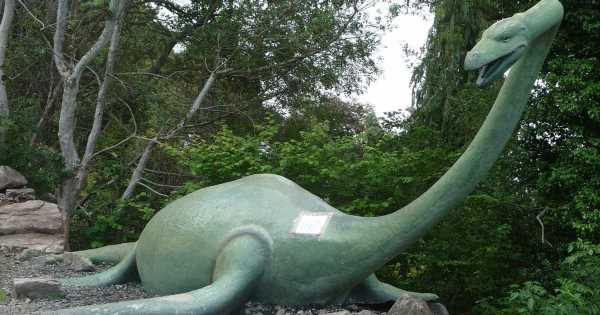The Loch Ness Monster could soon be discovered with climate change impacting the depths of its underwater home, experts have warned.
There are also fears that food sources in Loch Ness could be impacted by rising temperatures, meaning that soon Nessie could be "roaming the banks of Loch Ness" looking for a feed.
Joan Lawrie, project manager with the North Highlands and Islands Climate Hub, said increasingly common extreme weather events – such as the recent heatwave – will create a "much more unstable" climate for the monster if it exists.
READ MORE: 'Loch Ness Monster' sighting was actually an escaped Alpaca going for a swim
She said: “Loch Ness, as a freshwater loch, is deep and cold making it an ideal place for Nessie to hide away from public view, ducking down to the depths to never quite be seen.
“This may change with the loch getting warmer and potentially drought impacting on its depths, coupled with changing temperatures impacting the food sources Nessie might be reliant upon.
“Nessie is our most important monster in Scotland, the legend of Nessie being international.
-
Devastated couple left in tears by 'disaster' £500 hotel room stay 'not fit for humans'
“By taking action now to combat climate change we can preserve Nessie’s natural habitat before she is roaming the banks of Loch Ness looking for food and somewhere cold to hunker down.”
Joan added that Scotland was predicted to keep getting warmer, with increasingly dry summers and wetter, snow-free winters.
Consequently, Highland Adapts – a government initiative preparing the region for climate change – has called for action to be taken to protect Nessie's home.
Vice-chair Ben Leyshon said: “In the Highlands, we have taken the value of water as a resource for granted, but every year since 2018 we have experienced periods of water scarcity.
“This has both an impact on water volume but also, importantly, on water quality as well.
“This in turn affects the plants and animals that live in our lochs as well as our ability to use water for our own needs.”
Ben added that Highland Adapts plans to "develop adaptation plans", working with locals, experts and public sector bodies to do so.
“This of course is also good news for those who believe in Nessie, because any positive action we take for nature will undoubtedly benefit the monster too,” he said.
For the latest breaking news and stories from across the globe from the Daily Star, sign up for our newsletter by clicking here.
Sadly, Nessie isn't the only Scottish species at risk from the dramatic changes in climate.
According to NatureScot – the public body responsible for Scotland’s natural heritage – many species are highly adapted to live in the specific habitats of the Scottish Highlands.
These changes in climate will have a "drastic" impact as animals struggle to keep up, leading NatureScot to conclude that climate change is “the single greatest threat to Scotland’s habitats”.
READ NEXT:
-
Loch Ness Monster hunter saw mystery creature 'shoot from water like torpedo'
-
Bombshell Nessie theory that Loch Monster is long-necked dinosaur
-
Legendary Loch Ness Monster may live in Stranger Things-style parallel universe
-
Nessie could actually be a 'giant toad' lurking in deepest depths of the loch
-
Stunned dock workers catch Loch Ness Monster's slimy 10ft rival with 'head of a cobra'
Source: Read Full Article






